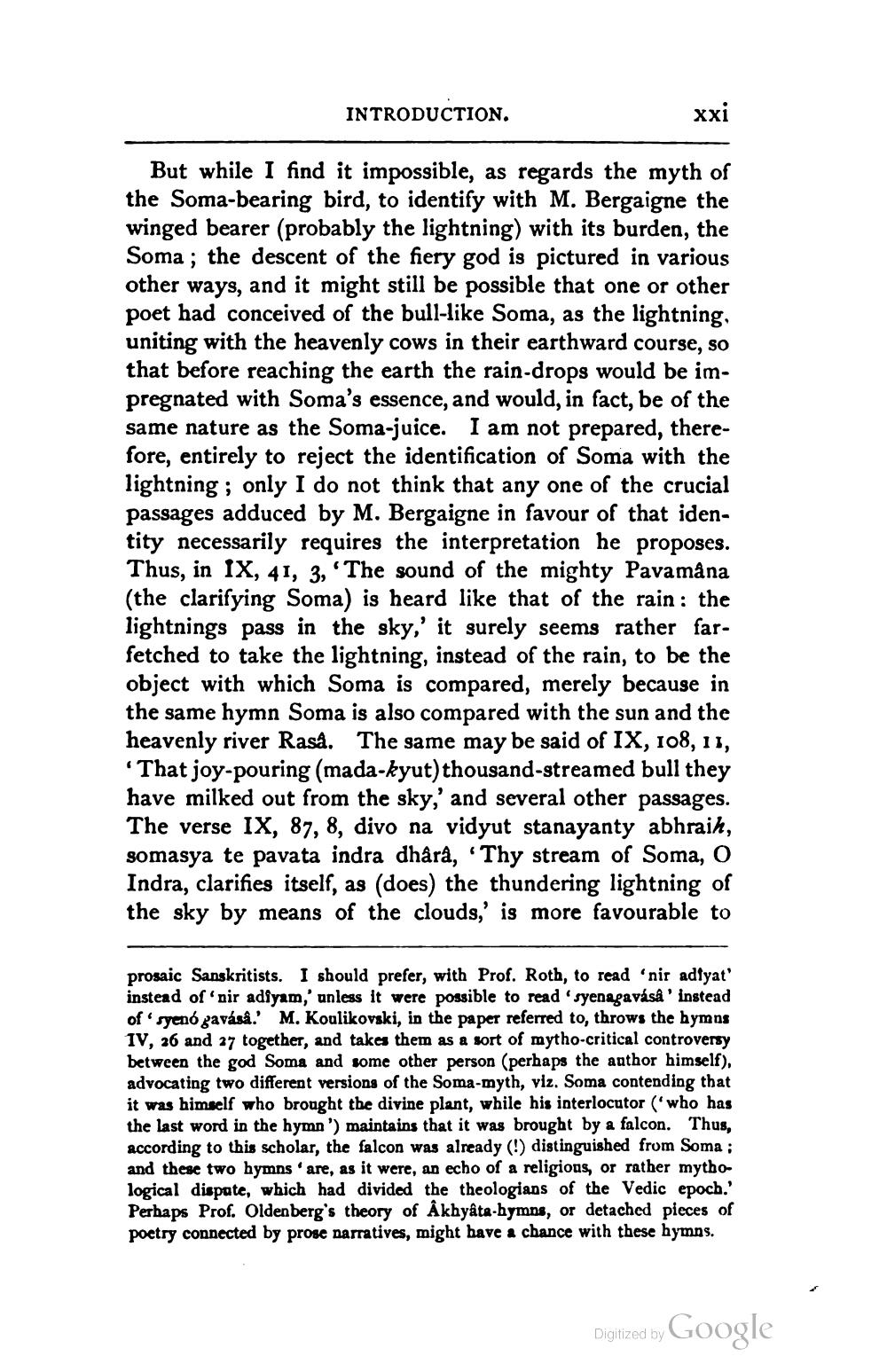________________
INTRODUCTION.
xxi
But while I find it impossible, as regards the myth of the Soma-bearing bird, to identify with M. Bergaigne the winged bearer (probably the lightning) with its burden, the Soma; the descent of the fiery god is pictured in various other ways, and it might still be possible that one or other poet had conceived of the bull-like Soma, as the lightning, uniting with the heavenly cows in their earthward course, so that before reaching the earth the rain-drops would be impregnated with Soma's essence, and would, in fact, be of the same nature as the Soma-juice. I am not prepared, therefore, entirely to reject the identification of Soma with the lightning ; only I do not think that any one of the crucial passages adduced by M. Bergaigne in favour of that identity necessarily requires the interpretation he proposes. Thus, in IX, 41, 3, 'The sound of the mighty Pavamâna (the clarifying Soma) is heard like that of the rain : the lightnings pass in the sky,' it surely seems rather farfetched to take the lightning, instead of the rain, to be the object with which Soma is compared, merely because in the same hymn Soma is also compared with the sun and the heavenly river Raså. The same may be said of IX, 108, 11, 'That joy-pouring (mada-kyut) thousand-streamed bull they have milked out from the sky,' and several other passages. The verse IX, 87, 8, divo na vidyut stanayanty abhraih, somasya te pavata indra dhåra, 'Thy stream of Soma, O Indra, clarifies itself, as (does) the thundering lightning of the sky by means of the clouds,' is more favourable to
prosaic Sanskritists. I should prefer, with Prof. Roth, to read 'nir adfyat' instead of nir adiyam,' unless it were possible to read 'syenagavasa' instead of syenó gaváså.' M. Koulikovski, in the paper referred to, throws the hymns IV, 26 and 27 together, and takes them as a sort of mytho-critical controversy between the god Soma and some other person (perhaps the author himself), advocating two different versions of the Soma-myth, viz. Soma contending that it was himself who brought the divine plant, while his interlocutor (who has the last word in the hymn ') maintains that it was brought by a falcon. Thus, according to this scholar, the falcon was already (!) distinguished from Soma ; and these two hymns are, as it were, an echo of a religious, or rather mythological dispate, which had divided the theologians of the Vedic epoch.' Perhaps Prof. Oldenberg's theory of Akhyâta-hymns, or detached pieces of poetry connected by prose narratives, might have a chance with these hymns.
Digitized by Google




